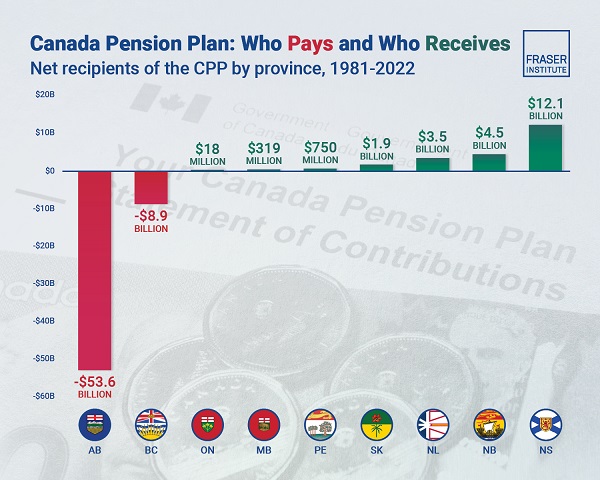Also Interesting
Top Reasons Why You Should Go to College in Canada

After 18 years of hard work, the time has finally come. You’re graduating from high school and headed to college. It’s one of the most exciting times in your life, so you want to make sure you choose the right school. No doubt the USA is known for its stellar learning institutions, but did you know that Canada is also home to excellent schools as well? Canada is often considered to be one of the best places to obtain a college degree. However, a quality education experience isn’t all that Canada can offer you.
Here are great reasons to go to college in Canada.
Affordable Tuition
Starting off with the financial aspect of things, many often opt to go to college out of state solely for cheaper tuition costs. Compared to the average price of college in the U.S., the costs are far lower in Canada. In some cases, the costs are cut in half and this applies to private schools as well. Granted, you’re still going to be financing for your education, so you’ll need a way to pay for it. There are plenty of ways to pay for a college education regardless of where you choose to study. If you’re looking for the quickest way to do it, then your best bet is to apply for a student loan.
Student loans provide students with the funding they need to pay for the tuition as well as any school supplies they need. However, this process is a little different from how it works in the U.S. You’ll apply for this loan at the Canada Student Loan Program (CSLP) or Canada Student Grants Program (GSGP). You can’t ask for a specific amount on the loan itself. How much you get will be a pre-determined amount that’s based on a few things. Some of these factors include your income or your family’s income and the cost of tuition. Make sure to research what else is going to be taken into account, so you can get a rough estimate.
Less Competition
You know how people often have to fight their way through competition to get accepted into some colleges? In Canada, you won’t have to worry about that issue. Canada is known for its amazing education system, and this is one of the most notable benefits. Not having a lot of competition, or any at all, makes it so easy for aspiring students to get the education they need, so they can excel in their life and career. In the U.S., getting into a certain college, like Harvard for example, isn’t exactly the easiest thing to accomplish. Some people have to rely on letters of recommendation from already established professionals or connection to even be considered. Canada seeks out pure academic performance.
Canadian Perks
Aside from living in a beautiful country, you’re also privy to Canadian amenities. Affordable healthcare, lower cost of living, and even low crime rates are to name a few. There are plenty of areas such as Vancouver, Toronto, Calgary, and Montreal you can live in. But as with any type of move, you want to research each area thoroughly before you can come to a decision.
Job Opportunities
Another key factor that Canada is well-known for is the amount of job opportunities students have. Students, in particular, actually have an advantage thanks to a post-graduate work permit (PGWP). This special permit is what lets students acquire the work experience they need in their career. It’s also what allows you to stay in the country, and work a full-time job at that, once you’ve verified you have a diploma, degree, or another form of certification. However, there are a few things you need to know first. For one thing, you can only apply for this permit once in their lifetime. You must first show proof of residence or you’ve left Canada. Then, you have to show that you’ve graduated from one of the designated learning institutions. You must also be registered as a full-time student, and have at least eight months that leads up to your degree. You’ll also need to receive your transcript from the aforementioned institutions that verifies you’ve met the requirements.
It’s possible to be considered ineligible for this permit as well. Here’s a list of what can make you ineligible for a post-graduate work permit in Canada:
Received the Global Affairs of Canada (GAC)
Received the permit before
Were a part of the Canada-China Scholar's Exchange Program
Got an Equal Opportunity Scholarship
Completed most of your credentials from distance learning
Completed a program that wasn't at one of the designated learning institutions in Canada
Even if you’ve managed to complete a program outside of the DLIs, you can still make yourself eligible by going to one. Sure, it will take time, but it’s more than worth the effort if you can procure a place in Canada.
Also Interesting
The bizarre story of Taro Tsujimoto

The National Hockey League (NHL) has seen its fair share of strange moments, but few compare to the bizarre and hilarious tale of Taro Tsujimoto, a player who never existed. His “selection” in the 1974 NHL Draft remains one of the most legendary pranks in hockey history. If you want to wager on actual players, making the 1xBet app download is definitely a great idea.
In the 1970s, the NHL Draft was a much less glamorous event than today. It was a tedious process conducted over the phone, with teams calling in their picks. The 3 biggest highlights of what happened during that year’s draft were:
- the draft dragged on for hours;
- there were multiple rounds and teams selecting unknown prospects from obscure leagues;
- frustrated with the monotony, Buffalo Sabres general manager Punch Imlach decided to have a little fun.
As the 11th round approached, Imlach instructed his team’s representative to draft Taro Tsujimoto, a supposed forward from the Tokyo Katanas of the Japan Ice Hockey League. The name sounded authentic enough. The league officials, unfamiliar with Japanese hockey, accepted the pick without question. By downloading the 1xBet app you will also be able to wager on great NHL teams too.
A small problem
There was a small problem with all of this, as 2 things didn’t exist: Tsujimoto and the Tokyo Katanas. Imlach had completely fabricated the player as a joke, taking advantage of the NHL’s lack of verification. When it comes to NHL wagers, there is no better platform than the 1xBet Canada site.
For weeks, the league listed Tsujimoto as an official draft pick, and even some newspapers reported on Buffalo’s mysterious new Japanese prospect. Eventually, the Sabres admitted the hoax, and the NHL was forced to retroactively erase the selection from its records.
Despite being a fictional player, Taro Tsujimoto took on a life of his own. Buffalo Sabres fans embraced the prank, and over the years, his name has become a cult legend in hockey culture. Some fans even wore jerseys with “Tsujimoto” on the back. The joke persisted so much that when EA Sports released NHL video games, players could occasionally find Tsujimoto in the game’s draft pool as a hidden Easter egg.
More than just a prank, the story of Taro Tsujimoto highlights 2 things: the quirks of old-school sports management and the creativity of one of hockey’s most colorful executives. Today, with the draft process being highly scrutinized and broadcast live, such a prank would be impossible. But Tsujimoto’s legacy lives on as one of hockey’s greatest inside jokes. What is not a joke are the great rewards that a platform like the Canadian 1xBet site can give you.
Also Interesting
60% of Canadians gamble each month – why the industry is going from strength to strength

When it comes to regulating gambling, Canada has a somewhat relaxed approach. The Canadian Gaming Association oversees the industry, but it’s up to individual provinces to enact and enforce any laws relating to online casino gaming, sports betting, traditional casino gaming, and other forms of gambling.
Canada’s online casino gaming laws are not totally clear, but individual provinces are starting to put this right. Ontario was the first and did so when it launched its own regulated igaming market in April 2022. Now some other provinces have followed suit, creating a safer igaming environment for players in those provinces. Below is a look at gambling in Canada compared to other parts of the world, at gaming laws in Alberta compared to other provinces, and at the future of the Canadian, US, and UK gambling industries.
Canada: a forever love of gambling
Gambling in some form or other has always been popular in Canada. Way back in the 1990s, research found six in ten Canadians (60%) gambled every month. Additionally, four in ten (43%) spent between 1 and 20 Canadian dollars on gambling. Fast forward to today and the Canadian gambling market is worth 14.2 billion US dollars as of January 2024, according to data on the website of consumer and market data company Statista.
It seems Canada enjoys wagering just as much as two other countries that love a gamble: the US and the UK. Data on the Statista website shows that 49% of US adults took part in gambling activities in 2023. Fifty-six percent said their attitude towards gambling had relaxed, compared to the 50% of 2019.
The UK returned similar stats for the same year. Forty-eight percent of adults reported engaging in gambling activity. Online casinos generated the most gross gambling yield in 2023, but it was the nation’s National Lottery that people played the most.

Alberta: following Ontario’s lead
The regulatory developments in Ontario have triggered movement in Alberta. In May 2024, Bill 16, the Red Tape Reduction Amendment Act, made it through the process and later received Royal Assent to become law. The act removes the monopoly of gaming by a single government entity and will allow private operators, licensed by Alberta’s provincial regulator, to provide online gaming services in Alberta, meaning players will have a choice of more than one Alberta online casino to play at.
The regulation transforms Alberta into one of the more liberal provinces when it comes to online gambling, others being Quebec, Ontario, and British Columbia.
Several provinces, such as Novia Scotia and Northwest Territories, have no provincially regulated online gaming sites. Some also restrict betting on horse racing and/or other types of sports betting, obliging citizens to use international betting sites for freedom from caps and betting on as many events as they wish.

What lies ahead for the Canadian, US, and UK gambling industries?
Canada’s appetite for gambling is clear, and the industry’s online sector is beginning to thrive. Ontario has enjoyed vast success by creating its own regulated market, one which, in just its first year, saw Canadians place billions in wagers and the industry itself generate more than a billion in total gaming revenue.
Canada can expect to see other provinces follow Ontario’s lead and allow private operators to provide services in the province under license. The purpose of the regulation is player protection. Any province that develops a regulated market will focus on this, so there will also be regulations around the advertising of gambling services.
The US
Gambling online is the future for the US, too, although states are slow to legalize it. As of September 2024, 38 states had legalized sports betting, following the US Supreme Court’s ruling that states could regulate sports gambling directly.
Despite allowing sports betting, some states only permit in-person betting, and only a few states allow online casino gaming. Operators believe online casino gaming is the future of gambling.
The UK
In the UK, the use of artificial intelligence (AI) will get bigger and bigger. Companies have realized AI can enhance players’ experience and are embracing it more and more. For instance, sports betting websites can use it to crunch data and provide iGamers with stats and other data to make better betting decisions. They’re also understanding they can use AI to prioritize content players are likely to be interested in and to personalize their offerings and services to players’ preferences.
Canada enjoys gambling as much as America and the UK. Although laws around igaming are more of a grey area in Canada, some provinces are clearing the issue up by creating regulated markets and experiencing great success. As time goes by, more are sure to follow.
-

 Alberta2 days ago
Alberta2 days agoAlberta Institute urging Premier Smith to follow Saskatchewan and drop Industrial Carbon Tax
-

 Addictions2 days ago
Addictions2 days agoShould fentanyl dealers face manslaughter charges for fatal overdoses?
-

 Also Interesting1 day ago
Also Interesting1 day agoThe bizarre story of Taro Tsujimoto
-

 Alberta2 days ago
Alberta2 days agoAlbertans have contributed $53.6 billion to the retirement of Canadians in other provinces
-

 2025 Federal Election2 days ago
2025 Federal Election2 days agoChinese Gangs Dominate Canada: Why Will Voters Give Liberals Another Term?
-

 Energy2 days ago
Energy2 days agoEnergy, climate, and economics — A smarter path for Canada
-

 Health1 day ago
Health1 day agoRFK Jr. Drops Stunning Vaccine Announcement
-

 2025 Federal Election22 hours ago
2025 Federal Election22 hours agoSoaked, Angry, and Awake: What We Saw at Pierre Poilievre’s Surrey Rally





